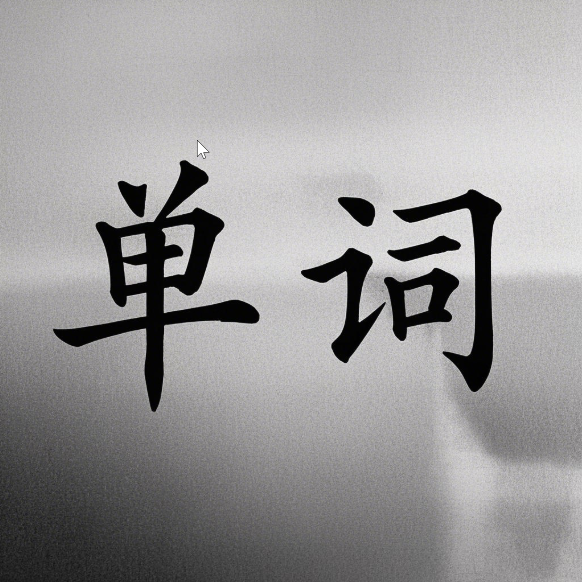ginning
简明释义
n. 轧花;轧棉
英英释义
单词用法
琴酒补剂;杜松子酒补剂 | |
轧花机;轧棉机 |
同义词
| 开始 | 项目的开始阶段很具挑战性。 | ||
| 启动 | 启动新政策需要大量的规划。 | ||
| 开始 | 仪式的开始被延迟了。 |
反义词
| 结束 | 这个故事的结局出乎意料。 | ||
| 完成 | 她提前完成了她的项目。 |
例句
1.Lower arrivals due to delay in monsoon and insufficient inventory with ginning mills have also contributed to increase in the price of cotton.
由于雨季的延迟使新棉上市延期,另外轧棉厂内库存不足也是抬高棉价的一个因素。
2.Causes of neps and influences of maturity and fineness of raw cotton, quality of cotton ginning, opening and cleaning, carding and combing and so on processes on neps are analyzed.
文中对棉结的成因、原棉成熟度、细度、轧棉质量、开清棉、梳棉及精梳等工序对棉结的影响进行了分析。
3.At the be ginning of the sales promotion you have to try every means to overcome sales difficulties.
在推销的初期阶段,你方一定要设法克服销售方面的种种困难。
4.Die-building can produce not only the traditional brick style, but also can produce the effect of ginning brick to the surface more bright.
华建模具不但可以生产传统砖的风格,还可以生产轧花砖的效果,使其表面更加光亮。
5.The state has around 500 ginning mills with around 1,000 traders and 10,000 commission agents relying on the cotton business.
该国家依赖于棉花的有500个轧棉厂,1000个贸易商,10000个佣金代理业务商。
6.The adsorption of superplasticizer on cement particle is the be-ginning of dispersion , and it is also foundation of its function.
在水泥颗粒表面的吸附是超塑化剂分散作用的开始,也是其作用的基础。
7.The quality of cotton can be affected by the ginning technique used.
棉花的质量可能会受到所用去籽技术的影响。
8.After ginning, the cotton fibers are ready for spinning.
经过去籽后,棉纤维准备好进行纺纱。
9.The process of ginning cotton is essential for producing fabric.
棉花的去籽过程对生产面料至关重要。
10.The invention of the cotton gin revolutionized the ginning process.
棉花机的发明彻底改变了去籽过程。
11.Farmers often invest in modern equipment to improve their ginning efficiency.
农民们通常投资现代设备以提高他们的去籽效率。
作文
In the world of agriculture, few processes are as crucial as the initial stages of cotton production. This is where the term ginning (脱粒) comes into play. The process of ginning involves separating the cotton fibers from the seeds, which is essential for producing the soft, fluffy material that we associate with cotton products. Without this step, the raw cotton would remain unusable, and the beautiful fabric we enjoy today would not exist. Ginning is not merely a mechanical process; it is a vital part of the agricultural economy that affects many lives.The history of ginning dates back to ancient times when farmers used simple hand tools to separate cotton fibers from seeds. However, with the invention of the cotton gin in the late 18th century by Eli Whitney, the process became much more efficient. This machine revolutionized the cotton industry by drastically reducing the time and labor required for ginning. As a result, cotton production soared, leading to increased availability and lower prices for consumers. The impact of this innovation was profound, setting the stage for the growth of the textile industry and influencing economic patterns across the globe.Today, the ginning process has become highly mechanized, utilizing advanced technology to improve efficiency and reduce waste. Modern gins can process thousands of pounds of cotton per hour, ensuring that the fibers are separated cleanly and effectively. This technological advancement has made it possible for cotton to be a staple crop in many countries, providing livelihoods for millions of farmers and workers.The significance of ginning extends beyond just the agricultural sector. It plays a critical role in the global economy, as cotton is one of the most widely used natural fibers in the world. From clothing to home furnishings, the products derived from cotton are ubiquitous in our daily lives. Understanding the importance of ginning helps us appreciate the journey that cotton takes from field to fabric. It reminds us of the hard work and innovation that go into producing the textiles we often take for granted.Moreover, the environmental impact of ginning cannot be overlooked. As the demand for cotton continues to rise, sustainable practices in cotton farming and ginning are becoming increasingly important. Farmers and ginners are now focusing on methods that minimize water usage, reduce chemical inputs, and promote soil health. These efforts are crucial for ensuring that cotton production remains viable for future generations.In conclusion, the process of ginning is a fundamental aspect of cotton production that has evolved significantly over time. From its humble beginnings to the modern, high-tech methods used today, ginning has shaped the agricultural landscape and continues to influence the global economy. By understanding the intricacies of this process, we can better appreciate the role that cotton plays in our lives and the importance of sustainable practices in its production. The next time you wear a cotton shirt or use a cotton towel, take a moment to consider the journey of the fibers and the vital role of ginning in bringing those products to your home.
在农业世界中,几乎没有哪个过程像棉花生产的初始阶段那样重要。这就是术语ginning(脱粒)发挥作用的地方。Ginning的过程涉及将棉纤维与种子分离,这对生产我们所熟悉的柔软、蓬松的棉花制品至关重要。如果没有这个步骤,原棉将无法使用,我们今天所享受的美丽面料将不存在。Ginning不仅仅是一个机械过程;它是影响许多人生活的农业经济的重要组成部分。Ginning的历史可以追溯到古代,当时农民使用简单的手工具将棉纤维与种子分开。然而,随着18世纪末伊莱·惠特尼发明棉花机,这一过程变得更加高效。这台机器彻底改变了棉花工业,大幅减少了脱粒所需的时间和劳动。因此,棉花生产激增,使消费者能够更容易获得并以更低的价格购买。这个创新的影响深远,为纺织工业的发展奠定了基础,并影响了全球的经济格局。如今,ginning过程已经高度机械化,利用先进的技术来提高效率和减少浪费。现代的棉花机每小时可以处理数千磅的棉花,确保纤维被干净有效地分离。这一技术进步使得棉花成为许多国家的主要作物,为数百万农民和工人提供了生计。Ginning的重要性不仅限于农业部门。它在全球经济中发挥着关键作用,因为棉花是世界上使用最广泛的天然纤维之一。从服装到家居用品,棉花衍生的产品在我们的日常生活中无处不在。理解ginning的重要性帮助我们欣赏棉花从田野到面料的旅程。它提醒我们,生产我们常常视为理所当然的纺织品背后蕴含着艰辛的工作和创新。此外,ginning的环境影响也不容忽视。随着对棉花需求的不断上升,棉花种植和ginning中的可持续实践变得越来越重要。农民和脱粒者现在专注于减少水资源使用、降低化学投入和促进土壤健康的方法。这些努力对于确保棉花生产在未来几代人中仍然可行至关重要。总之,ginning过程是棉花生产的基本方面,随着时间的推移发生了显著变化。从其谦卑的起源到今天现代的高科技方法,ginning塑造了农业格局,并继续影响全球经济。通过理解这一过程的复杂性,我们可以更好地欣赏棉花在我们生活中的角色以及其生产中的可持续实践的重要性。下次当你穿上棉质衬衫或使用棉质毛巾时,花一点时间考虑一下这些纤维的旅程,以及ginning在将这些产品带到你家中所发挥的关键作用。
